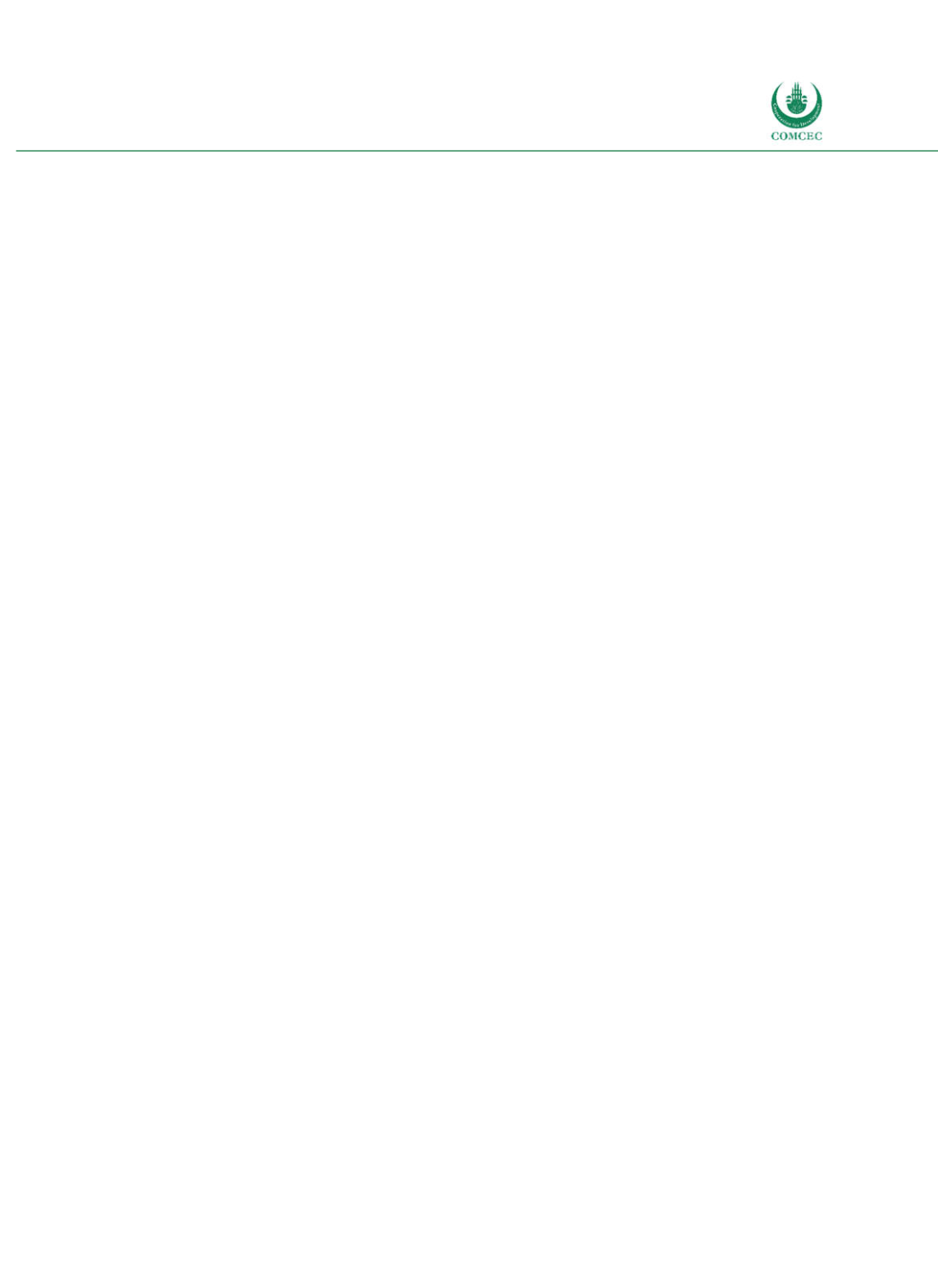

Improving Public Debt Management
In the OIC Member Countries
65
capital markets and attracting new investors from Islamic countries. Investors also benefit
from new sovereign
sukuk
issuances because of the opportunity to diversify their portfolios. In
the past,
sukuk
have been limited in their structural and regional diversity (Jobst et al 2008).
Governments have provided incentives and initiatives in creating benchmark issuance for
sukuk
, such as taxdeductible expenses and monthly shortterm papers for liquidity purposes.
Sukuk
bonds can obtain higher credit ratings because their assetbacked structure links the
bonds to real economic activity and returns.
Among the OIC countries, about 64% use
sukuk
in public debt management. Among those
countries participating in the Ifo Public Debt Management Survey, 62% plan to increase the
share of Islamic finance products in public debt management in the next years. Malaysia and
Côte d’Ivoire have even set strategic targets for the use of Islamic finance instruments in public
debt management, especially concerning the share of Islamic bonds over total bonds.
Sukuk
allows issuers to raise capital for various purposes, such as funding largescale
infrastructure projects. In several Islamic markets, funding gaps and infrastructure
requirements exist. Infrastructure projects are especially suitable as an underlying structure
for sovereign
sukuk
bonds given their assetbacked characteristics. Moreover, risk sharing
related to the underlying project is possible (
musharakah
), and a structure allowing for fixed
returns, depending on the investor’s risk preferences (
murabahah, ijarah
). As investments in
infrastructure are expected to increase in developing and emerging countries with Islamic
banking playing an important role in many of these markets,
sukuk
issuance related to
infrastructure is expected to further increase (MIFC 2013). In particular, the GCC countries –
one of the key markets for Islamic finance – are expected to see substantial investments in
roads, railways, telecommunication, electricity, water infrastructure, airports and seaports
over the next decade. These governments may take advantage of Islamic bonds to finance such
largescale infrastructure investments. Even nowadays, a big portion of
sukuk
funds are
already raised to finance infrastructure projects in GCC countries and Southeast Asia. In 2013,
for example, 21.2% of total global
sukuk
was related to infrastructure. In Malaysia, the most
prolific issuer of
sukuk
, the infrastructure share was 73.3% and in Saudi Arabia 21.9% in 2012.
The governments of Indonesia, Pakistan, Kuwait and Brunei Darussalam have also raised a
considerable amount of infrastructure funds by issuing sovereign
sukuk
(MIFC 2013).
However,
sukuk
have some shortcomings, too. Islamic finance instruments do not always
minimize costs, which may be a priority for public debt management. The issuance of
sukuk
goes along with additional administrative costs and increased legal and accounting challenges,
because cash flows from real assets need to be identified and the sharia compliant structure
has to be administered. Thus, more time is needed for preparing and issuing
sukuk
bonds
compared to conventional bonds. Due to higher administrative costs,
sukuk
are usually bought
at a higher premium (Jobst et al 2008). Figure 321 shows that yields on various
sukuk
bonds
were above the yield of US government securities.
Due to the projectbased structure of
sukuk
bonds, their rather infrequent issuance and the fact
that
sukuk
are yet not as widely held by international investors as conventional bonds, the
sukuk
market is exposed to the risk of an inefficient price system. Market prices are not useful
as a reference rate for
sukuk
bonds with different structures (Sundararajan et al 1998). The
nonprice features that are warrant to raise the rates of return make
sukuk
bonds relatively
illiquid and may restrict the progression of a secondary market. However, marketbased
methods and the presence of vital and efficient primary and secondary markets that use
instruments such as discounting are often essential in the context of cost minimization
(Sundararajan et al. 1998).
















